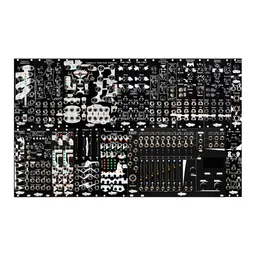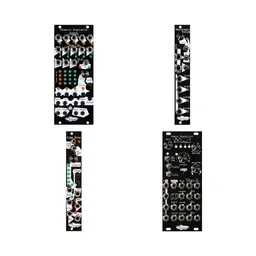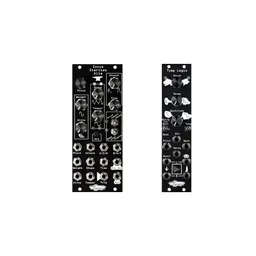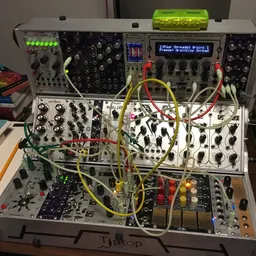Envelope followers are one of those little utilities that may seem uninteresting at first glance, but they can be incredibly useful. Let’s talk about what they do.
Envelopes
A quick distinction is in order here: don’t confuse envelope followers and envelope generators. Both generate CV, but they work quite differently. Envelope generators (often shortened to EGs) take a gate or trigger and create a musically useful control signal. The most famous type of envelope is the ADSR which looks like this:

An envelope follower, however, takes an audio input and creates a control signal based on the dynamics.
How’s that work?
Think about a sound, like a kick drum. Now, imagine drawing a line following the volume of that sound. In slightly more technical terms, the waveform (or oscillogram) plots the amplitude of the sound over time. If you drew a line that followed the edge of the plot, that would be (pretty much) the line that an envelope follower makes, because it follows the envelope. Then it outputs that line as control voltage. It would look something like this:

Our filter, Viol Ruina, has a built-in envelope follower that you can engage with the Laser switch. It makes the filter frequency follow the dynamics of the input volume, which can be expressive and interesting with the right input.
Learn more:
What’re some other places envelope followers are used?
Envelope followers are actually really common, but are generally built in to other devices. For instance, auto-wah pedals are controlled by envelope followers. Compressors effectively utilize envelope followers to calculate gain reduction (read all about compressors in our post about just that). My favorite use is in vocoders: the carrier signal is sent through a bunch of VCAs and bandpass filters, and the modulator signal is sent through a bunch of filters and envelope followers, controlling the levels of the VCAs on the carrier signal. This imparts some of the spectral information of the modulator signal onto the carrier signal, making things like robotic vocoded vocals sound like they do.
How can we patch one together?
If you don’t have a dedicated envelope follower in your system, you can probably still patch one together. All you need is a full-wave rectifier (FWR) and a slew limiter. The FWR gives you a positive-voltage-only version of your audio signal, and the slew turns the fast motion of the audio into a smooth, useful signal. Adjust the rise and fall times on your slew until you get something you like out of it and there you go! The whole process looks like this:
And, if you want a shortcut, run audio into the Gate input on Sinc Bucina. It does all that stuff for you!
Envelopes: it’s not over
While envelope following is cool, we passed by envelope generation without much notice. Have no fear, we’ll have a whole post about generating these pesky things later on!






